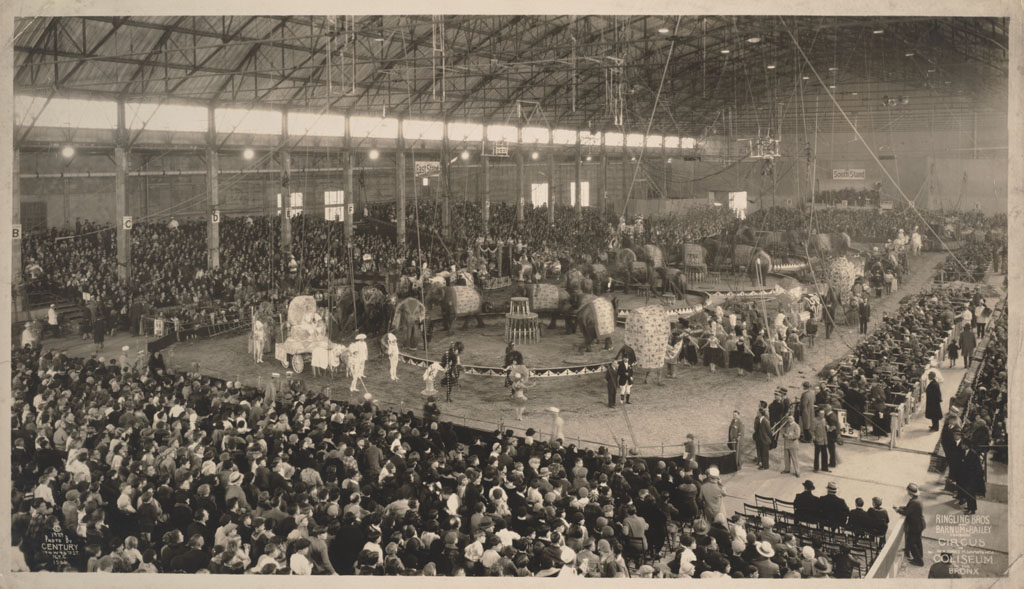
Above is a large-format photograph of the Ringling Bros. and Barnum & Bailey Circus performing at the Bronx Coliseum in March 1929 that I recently acquired at an auction. It was taken by Edward J. Kelty (1888–1967), who has been described as the “Cecil B. DeMille of circus photography” for the spectacular series of oversize prints he made using a custom-built banquet camera in the 1920s and 1930s. The photograph is of the so-called grand entrée when the circus performers and animals paraded around the ring in spectacular costume to open the show. The 1929 Ringling Bros. and Barnum & Bailey Circus was notable for being the last of the lavish editions of the show produced prior to the stock market crash that plunged the United States (and the circus industry) into depression. The circus was also unique for the fact that instead of beginning the season at Madison Square Garden, it began in the Bronx to celebrate the public opening of what was then called the New York Coliseum. The building was originally constructed as an auditorium for Philadelphia’s 1926 Sesquicentennial Exposition, and it was subsequently purchased by Edward B. Whitewell, owner of the Starlight Amusement Park, which was a kind of Bronx version of Coney Island that flourished in the 1920s. The arena was reconstructed at Bronx River and 177th Street with a Romanesque facade and seating for around 15,000. The March 21st opening of the building was celebrated by ex-Governor Al Smith and other dignitaries, although the photo above seems to be from a later daytime performance by the Ringling show. The stars of the circus were Goliath, billed as “The Monster Sea Elephant,” and Hugo Zacchini, an Italian daredevil who sensationally reintroduced the “human cannonball” act to the American circus. After a successful week in the Bronx, the circus transferred to Madison Square Garden for the remainder of its New York run. Despite its glittering debut, the New York Coliseum was not very successful as a venue, although it hosted everything from boxing matches to midget auto racing before being repurposed by the U.S. Army as vehicle-maintenance center during World War II. It was subsequently taken over by the New York City Transit Authority, and the building is now known as the West Farms Bus Depot.
A massive collection of Kelty photographs is available via the Ringling Museum here. For further information, see Step Right this Way: The Photographs of Edward J. Kelty and my own Circus and the City catalogue. All information about the history of the Bronx Coliseum is from a “Streetscapes” column by the peerless Christopher Gray in the New York Times.
*A reader noted that there is a Kelty photograph in Josh Sapan’s neat new book The Big Picture: America in Panorama
